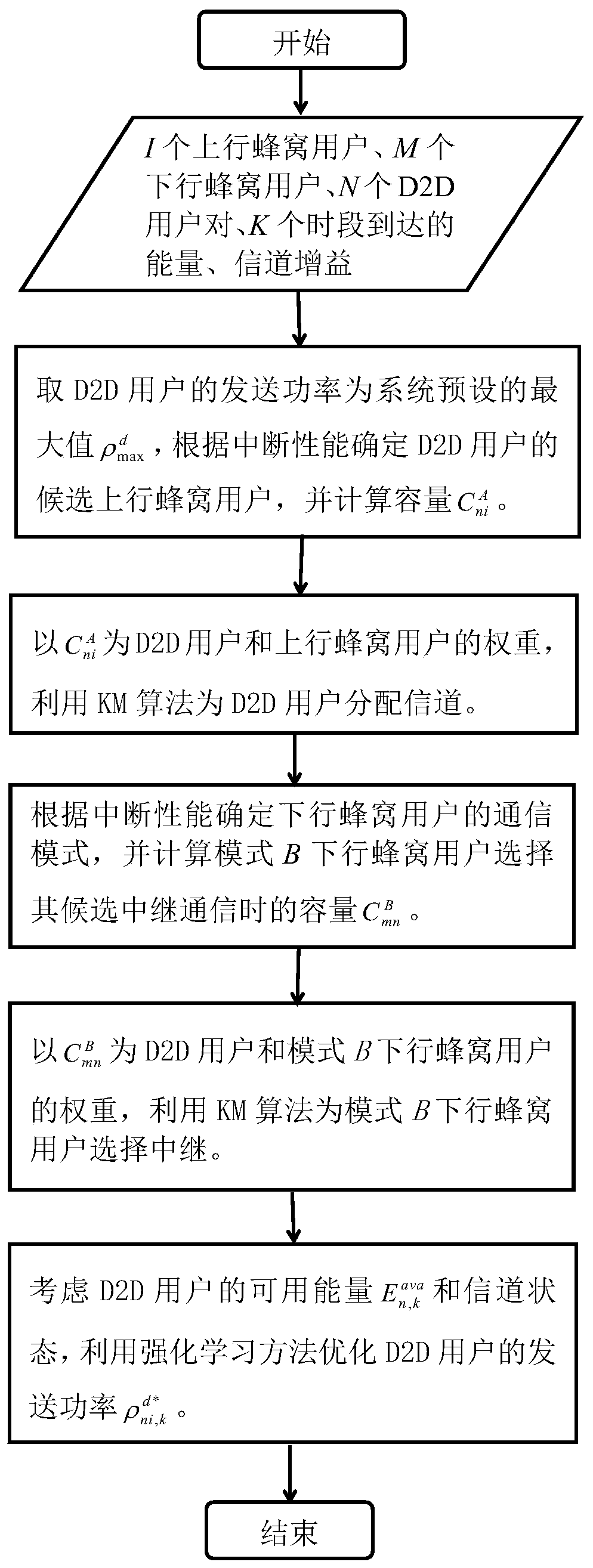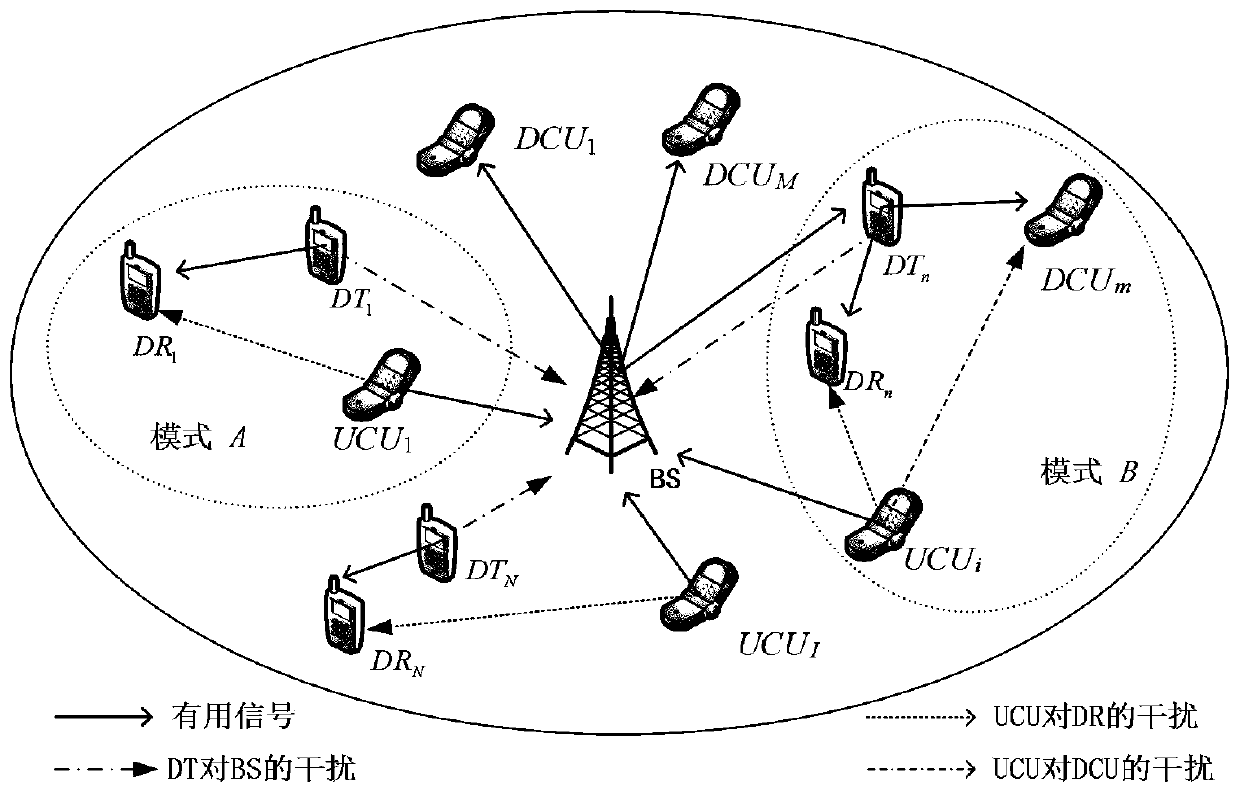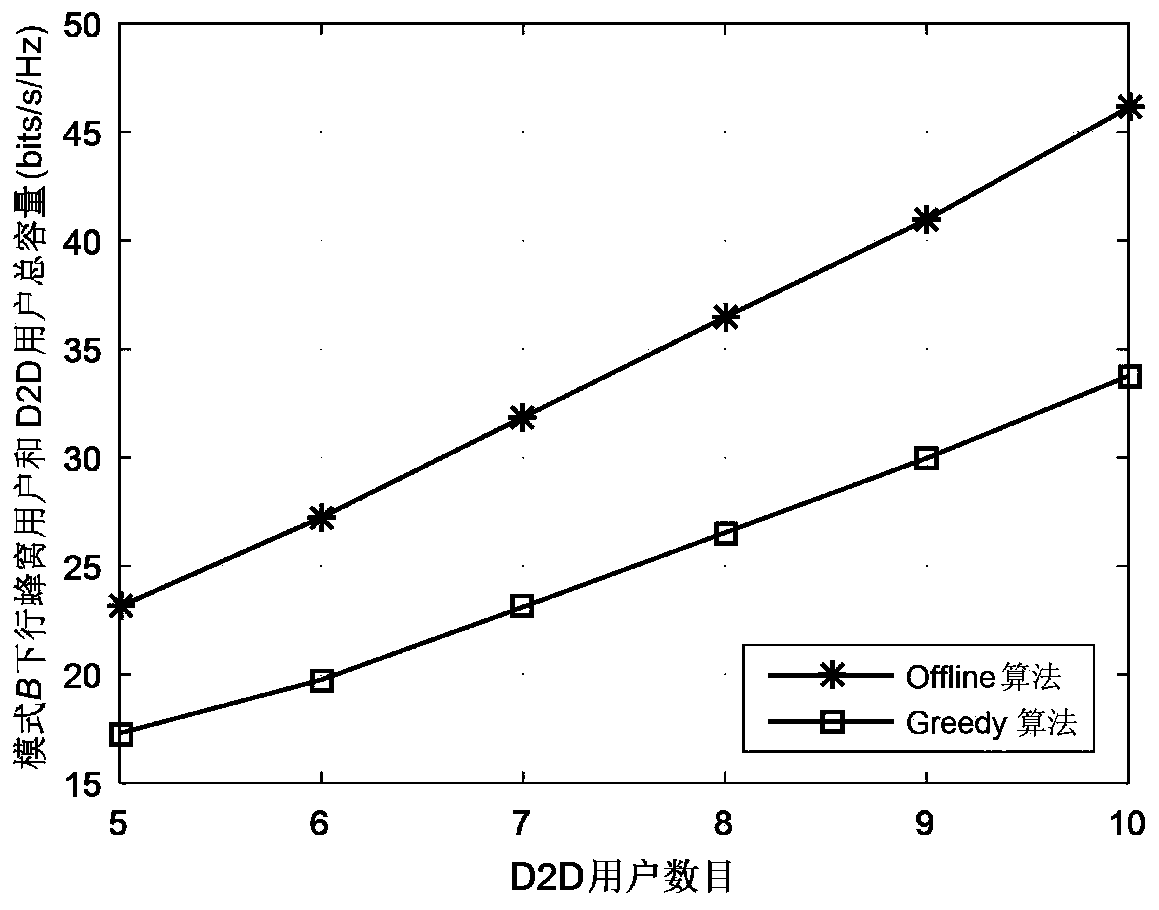Energy harvesting D2D communication resource allocation method based on reinforcement learning
A technology for communication resource allocation and energy collection, applied in network traffic/resource management, wireless communication, energy consumption reduction, etc.
- Summary
- Abstract
- Description
- Claims
- Application Information
AI Technical Summary
Problems solved by technology
Method used
Image
Examples
Embodiment Construction
[0039] The overall flow chart of the energy harvesting D2D communication resource allocation method based on reinforcement learning studied in the present invention is as follows figure 1 As shown, including the following steps:
[0040] 1. Establish the optimization problem of the total capacity of downlink cellular users and D2D users in maximization mode B:
[0041] Such as figure 2 As shown, consider the single-cell model. The cell includes a base station located in the center of the cell, I uplink cellular users, M downlink cellular users, and N pairs of D2D users, using UCU={UCU 1 ,...,UCU i ,...,UCU I }, DCU = {DCU 1 ,...,DCU m ,...,DCU M } And DU = {DU 1 ,...,DU n ,...,DU N }Represent the uplink cellular user set, downlink cellular user set and D2D user set, where UCU i , DCU m And DU n Denote uplink cellular user i, downlink cellular user m, and D2D user n respectively. Each D2D user pair includes a D2D transmitter and a D2D receiver.
[0042] Uplink cellular users occupies...
PUM
 Login to View More
Login to View More Abstract
Description
Claims
Application Information
 Login to View More
Login to View More - R&D
- Intellectual Property
- Life Sciences
- Materials
- Tech Scout
- Unparalleled Data Quality
- Higher Quality Content
- 60% Fewer Hallucinations
Browse by: Latest US Patents, China's latest patents, Technical Efficacy Thesaurus, Application Domain, Technology Topic, Popular Technical Reports.
© 2025 PatSnap. All rights reserved.Legal|Privacy policy|Modern Slavery Act Transparency Statement|Sitemap|About US| Contact US: help@patsnap.com



